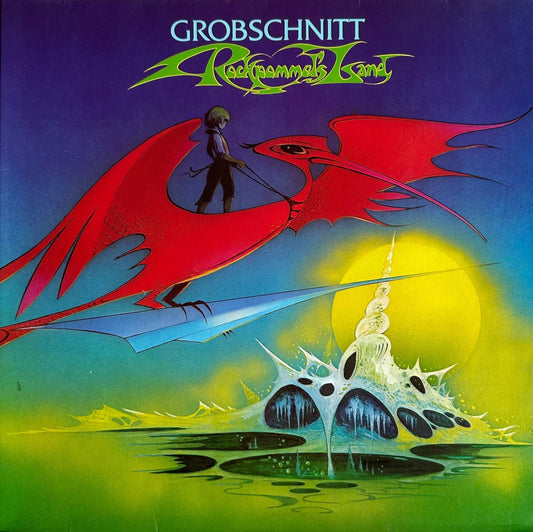Back in Copper #3, I asked the question, “When is Stealing Music Not Stealing?” To make a long story short, my conclusion was that stealing is always stealing, whether it’s a thinly-veiled cover version or a systemic and systematic hijacking of royalties or rights. As I commented in that article, mega-artists seem to do okay when it comes to actually making money from selling records or downloads, or being played on streaming services—whereas indie artists and little guys are often left out in the cold.
The music business has a long history of dishonest promoters and producers getting rich by taking advantage of naive artists, as well as simple theft of melodies or even complete songs. Nearly all Boomers are familiar with the whole “Sweet Little Sixteen”/”Surfin’ USA” fiasco, in which the Beach Boys’ 1963 song copped the melody and riffs of Chuck Berry’s 1958 hit. Remember?
A decade after that was the whole “He’s So Fine”/”My Sweet Lord” business, which was so obvious that you wonder how no one took George Harrison aside and said, “Umm, George? Doesn’t that REMIND you of anything??”
You’d think that the notoriety of that case would’ve made artists wary of, shall we say, reworking familiar songs. At this point we enter some very murky waters indeed. Given that there are only so many notes, and so many ways one can arrange them—when do two sound-alike songs go beyond coincidence and into plagiarism? And what do we make of the whole practice of sampling, which is not just borrowing a melody, but actual reproduction of a piece of a recording?
In the digital era, the whole business of IP—Intellectual Property—has become hugely important because it’s easier than ever to copy the work of others and present it as one’s own. Even with the acknowledgment that generally ( but not always!) accompanies sampling, who owns what and who did what become difficult to pin down.
Going back to the early days of rap and hip-hop, DJs mixing in performances of others was at the heart of the experience, often by spinning a record on the spot. Think back to the silly hit, “Ice, Ice, Baby”: if the extensive sampling of the Queen/David Bowie song “Under Pressure” is removed, what’s left? A sophomoric and rather embarrassing rip-off of the macho adolescent posturing of the Beastie Boys?
As the possibility of getting rich from selling records diminishes, the desire to make megahits has become ever more desperate and frantic. Sampling has become not just common but standard practice, and the wealthiest and most successful producers and record moguls are those who have mastered the arcane art of the beat and the sample. Think of Dr. Dre, Karl Martin Sandberg (better known as Max Martin), and Pharrell Williams, to name just a few of the most-successful.
Pharrell was at the center of a controversy a few years back, when the family of the late Marvin Gaye claimed that Gaye’s 1977 hit, “Gotta Give It Up” was disturbingly similar to Robin Thicke’s 2014 record, “Blurred Lines”, cowritten and produced by Williams. While not the note-by-note theft of “Surfin’ USA”, “Blurred Lines” was said to ape the arrangement and “vibe” of Gaye’s record. Ultimately, a jury agreed, and Gaye’s family was awarded $5.3 million and half the future royalties from “Blurred Lines”.
Williams said, “”The verdict handicaps any creator out there who is making something that might be inspired by something else.” And really, if emulating the feel or “vibe” of a song—as was the basic contention of the “Blurred Lines” suit— is enough to result in litigation, that is a considerable constraint upon creativity.
Other examples of similar songs that resulted in legal action are detailed in an interesting Rolling Stone piece.
I stumbled upon a website the other day, the existence of which surprised me. Why, exactly, I’m not sure; after all, the interwebs have all the answers, no? The site is Whosampled.com, and it’s interesting reading, even if you don’t recognize many of the current artists. The site’s equivalent of the Billboard Hot 100 comes in the form of three lists: Most Sampled, Most Covered, and Most Remixed.
Would it surprise you to know that the artist sampled the most was James Brown, with nearly 7,000 samples? Likely not, but would you recognize #2 on that list, The Winstons? I’d never heard of that group, and yet their records have been sampled nearly 2,800 times. A six-second (SIX SECONDS!!!) drum break on their record, “Amen, Brother” has been sampled so many times that it’s become known as the “Amen Break“. Most Covered is—surprise!—The Beatles, with over 4,000 covers of their songs. Most Remixed? Madonna and Moby aren’t surprising, but who is #3 on the list, Dutch DJ Armin Van Buuren?? A number of other DJs fill out the Most Remixed list, perhaps indicating that he who lives by the remix, dies by it, as well.|
It seems ironic that most recent fuss about musical plagiarism was created by a song called “Blurred Lines”, as the definition of musical creation becomes increasingly difficult to pin down, and rights of musical creators become…blurred. Given recent judicial decisions, things are not going to improve for artists.
Courts in New York and Florida ruled that recordings made before 1972 are not by protected by copyright. The judgments came down in suits filed by former Turtles Howard Kaylan and Mark Volman (also known as Flo and Eddie from their stint with the Mothers of Invention), who sought to protect the rights to Turtles songs.
I don’t pretend to understand the decisions, which are apparently based upon the landmark Sound Recordings Amendment of 1971, which first extended copyright protection to sound recordings…but only those produced after the adoption of the Amendment.
As is often the case in the world of music, it appears the only real winners in this battle will be the attorneys.


